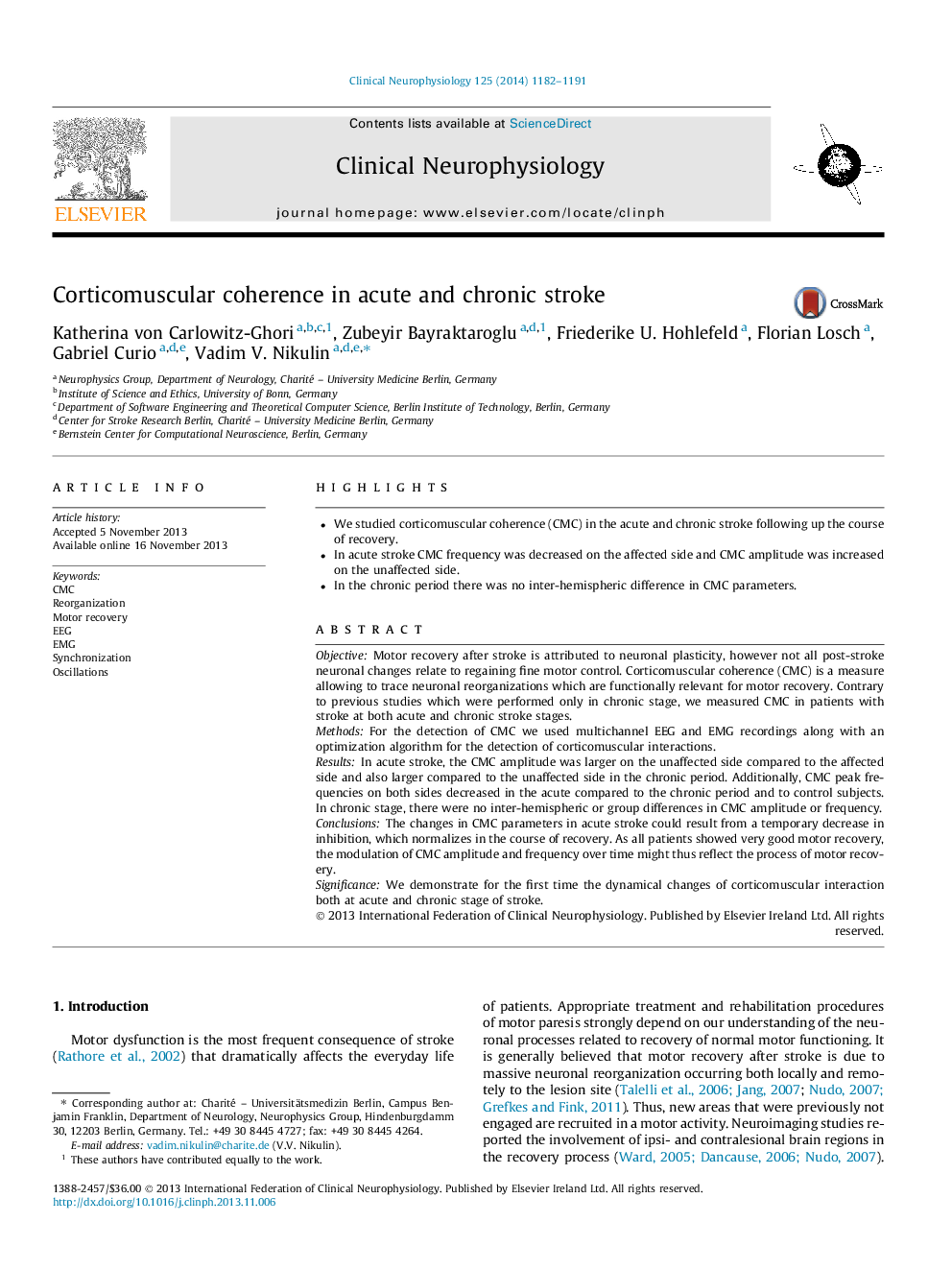| Article ID | Journal | Published Year | Pages | File Type |
|---|---|---|---|---|
| 6008526 | Clinical Neurophysiology | 2014 | 10 Pages |
â¢We studied corticomuscular coherence (CMC) in the acute and chronic stroke following up the course of recovery.â¢In acute stroke CMC frequency was decreased on the affected side and CMC amplitude was increased on the unaffected side.â¢In the chronic period there was no inter-hemispheric difference in CMC parameters.
ObjectiveMotor recovery after stroke is attributed to neuronal plasticity, however not all post-stroke neuronal changes relate to regaining fine motor control. Corticomuscular coherence (CMC) is a measure allowing to trace neuronal reorganizations which are functionally relevant for motor recovery. Contrary to previous studies which were performed only in chronic stage, we measured CMC in patients with stroke at both acute and chronic stroke stages.MethodsFor the detection of CMC we used multichannel EEG and EMG recordings along with an optimization algorithm for the detection of corticomuscular interactions.ResultsIn acute stroke, the CMC amplitude was larger on the unaffected side compared to the affected side and also larger compared to the unaffected side in the chronic period. Additionally, CMC peak frequencies on both sides decreased in the acute compared to the chronic period and to control subjects. In chronic stage, there were no inter-hemispheric or group differences in CMC amplitude or frequency.ConclusionsThe changes in CMC parameters in acute stroke could result from a temporary decrease in inhibition, which normalizes in the course of recovery. As all patients showed very good motor recovery, the modulation of CMC amplitude and frequency over time might thus reflect the process of motor recovery.SignificanceWe demonstrate for the first time the dynamical changes of corticomuscular interaction both at acute and chronic stage of stroke.
